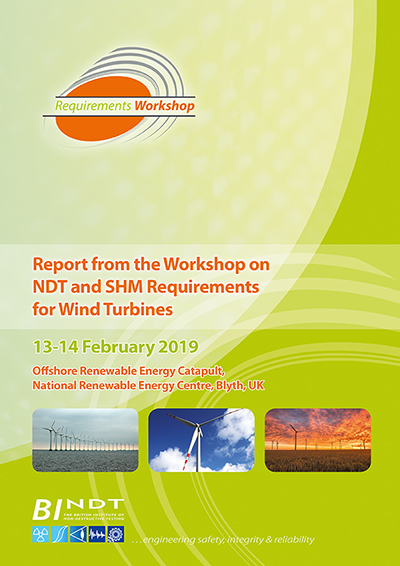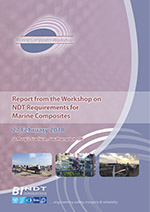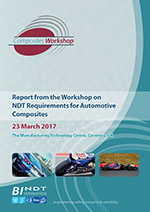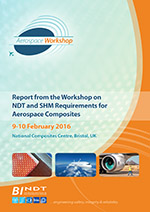Special Interest Groups
Figure 1 shows some of the groups that exist at the time of writing. Further groups may be established as topics arise.
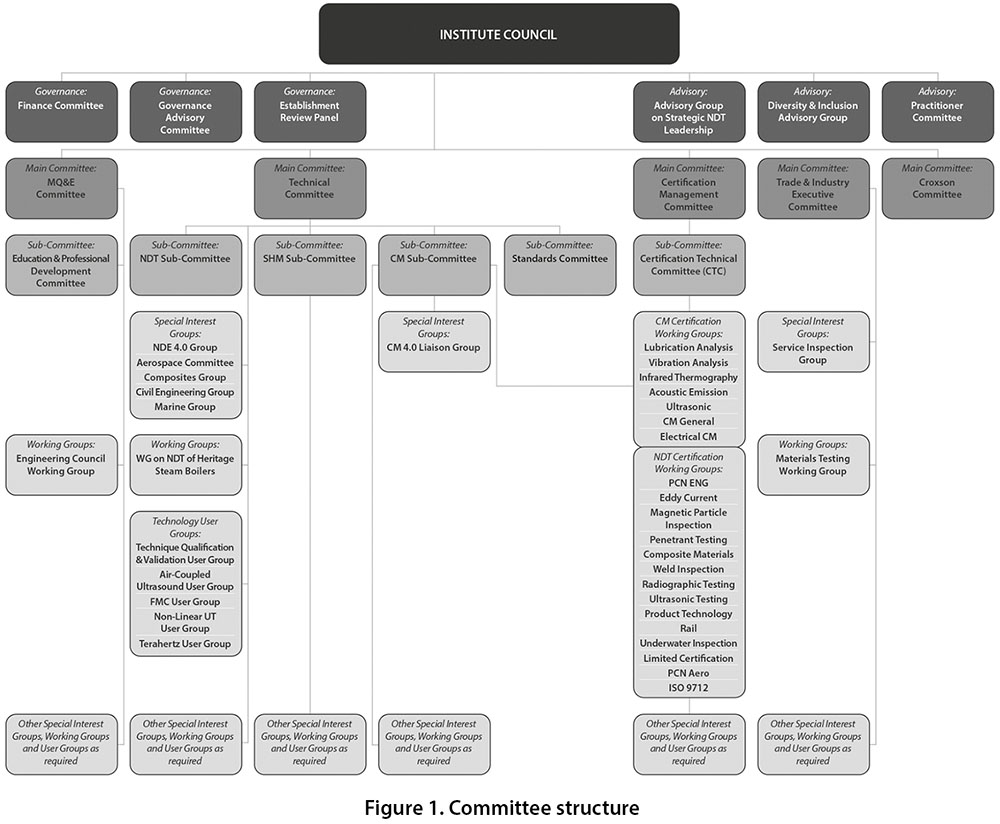
Current Special Interest Groups include:
- Aerospace Executive Committee
- Civil Engineering Group
- Composites Group
- NDE 4.0 Group
- Service Inspection Group (SIG)
Membership of all groups is open to members (and in some cases non-members) at no additional charge. Group members benefit from discussion of current topics of interest or controversy and from the interchange of views between individuals all sharing a specific common interest. As a group, they can influence affairs that they couldn’t as individuals.
For further information, contact Cindy Bailey at the Secretariat (cindy.bailey@bindt.org).
Aerospace Executive Committee The Aerospace Executive Committee is a specialist committee comprising members from across the aerospace sector, covering aircraft manufacturers, both civil and military, engine suppliers, material producers, training organisations, equipment suppliers and leading academic institutions. Membership of this Committee is open to anyone with an interest in the aerospace sector but voting rights are restricted to members of BINDT. The committee reports to the Technical Committee.
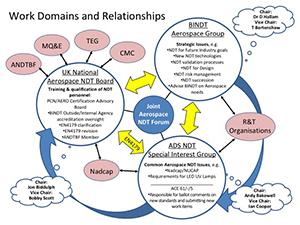 The Aerospace Executive Committee is focused on all things related to NDT within the aerospace sector. This includes providing guidance to the regulatory agencies (the European Union Aviation Safety Agency (EASA)), working closely with the UK National Aerospace NDT Board (UK NANDTB) and providing guidance to industry around the practice of NDT within the aerospace sector. It is also within its aims to promote the use of alternative technology and advancements in existing technology by looking at how these new technologies can be qualified and adopted in practice.
The Aerospace Executive Committee is focused on all things related to NDT within the aerospace sector. This includes providing guidance to the regulatory agencies (the European Union Aviation Safety Agency (EASA)), working closely with the UK National Aerospace NDT Board (UK NANDTB) and providing guidance to industry around the practice of NDT within the aerospace sector. It is also within its aims to promote the use of alternative technology and advancements in existing technology by looking at how these new technologies can be qualified and adopted in practice.The Aerospace Executive Committee is also committed to disseminating this information to the wider community, especially NDT practitioners, and to support this goal the Committee helps to coordinate the Aerospace Workshop and Event, which takes place annually in April.
The current aims of the Aerospace Executive Committee are:
- To define NDT requirements to meet future aerospace industry goals
- To develop roadmaps for NDT technologies to guide knowledge generators (for example universities and research and technology organisations (RTOs)) towards aerospace industry goals
- To change the perception of NDT so that it is seen as a solution rather than a burden, by promoting the benefits of NDT methods within the design, production and maintenance communities
- To promote and enable the introduction of new NDT technologies by identifying and tackling barriers and through scientific evaluation, validation and education of manufacturing and maintenance supply chains
- Through collaboration with various bodies such as NANDTB and ADS NDT SIG (in the Joint Aerospace NDT Forum), to provide a conduit into BINDT for aerospace-specific requirements.
Working Documents for the Aerospace Executive Committee:
| Working Document | Issue | Date |
| Aerospace Committee Terms of Reference | 3.0 | 14.08.24 |
| Aerospace Committee Objectives | 3.0 | 14.08.24 |
| Objective 3 – Promoting NDT as a benefit | 2 | 07.10.10 |
| Objective 4 – New technologies | 2.1 | 17.07.19 |
Names and contact details for members of the Aerospace Executive Committee:
Chair: K Pickup
Vice Chair: T Bertenshaw
Members
The following may be contacted via the Secretariat:
T J Barden, T Barron, P Boulton, K Burnham, P Burrows, K Cambridge, I Cooper, R Culver, P Evans, J Heaton, J Heigold,
P Jones, D Lines, C Mackle, G P Malfense Fierro, T Martin, G McCully, S McKnight, N Metcalf, E Mohseni, T O'Hare,
A Parsons, T Parsons, B Ravenshear, R Rose, W Sun, A Terry, V Tunikovic and D Wright.
Email: aeroexec@bindt.org
Civil Engineering Group The Civil Engineering Group reports through its Executive Committee to the Technical Committee of the British Institute of Non-Destructive Testing.
The aim of the Civil Engineering Group is to promote and advance the science and practice of NDT, SHM and CM within civil engineering.
The Civil Engineering Group’s enabling objectives are:
- To establish the requirements for improved NDT/SHM/CM solutions for the civil engineering sector, including training and certification
- To develop roadmaps for NDT/SHM/CM technologies to guide knowledge generators (for example universities and RTOs) towards civil engineering sector goals
- To promote and enable the introduction of new NDT/SHM/CM technologies by identifying and tackling barriers and through scientific evaluation, validation and education of asset owners and operators on new developments
- To facilitate networking between end-users, academics and supply chain partners.
Composites Group Reporting to the Technical Committee, the aim of the Composites Group is to promote and advance the science and practice of NDT and CM of composite materials.
Its enabling objectives are:
- To share knowledge via workshops, web-based resources and information for composite inspection problems, in particular, across industry sectors
- To raise the standard of, and standardise, composites training material and syllabuses and, through this, increase the availability of composites-trained NDT operators
- To capture present, and anticipate future, requirements for NDT of composites and enable a route to the solutions via roadmaps for new technologies
- To raise awareness of the problems requiring NDT solutions amongst NDT equipment manufacturers and research organisations
- To develop and maintain a database of composite specimens containing well-characterised defects (working with the National Composites Centre)
- To work with the structural integrity and design communities to identify and define mechanisms through which NDT/CM can enable optimised composite designs
- To pursue workable technique validation methods for NDT/CM of composite materials.
Membership of the group is open to anyone who is a member of the Institute who has an interest in the NDT of composite materials. Membership is free of any additional charge. Non-members of the Institute may be co-opted as non-voting members of the group.
Chair: R Rose
Vice Chair: Vacant
Scope of materialsMaterial/structure types
Monolithic
Sandwich
Fibre-metal laminates (for example, GLARE)
Bonded metal/composite hybrid (for example, composite repair patch on metal structure)
3D composites – 3D weave
Concrete
Timber/wood
Bonded joints
Other joints
Reinforcement
Carbon fibres (particles, short and long fibres)
Glass fibres
Kevlar fibres
Silicon carbide (used in titanium matrix composites)
Matrix types
Polymer/Organic (PMCs) – eg thermoset, thermoplastic
Metal (MMCs) – eg titanium, aluminium
Ceramic (CMCs)
Hybrid
Carbon (carbon-carbon composites)
Sandwich core materials
Nomex honeycomb
Aluminium honeycomb
Foam
Balsa
Scope of implementation
| Manufacturing methods | In-service Inspection |
| Pre Preg, RTM | Link to structural integrity design |
| Tape/Sheet | BVID, Access, Impact detection |
| Consolidation | Repair |
| Bonding | Characterisation of defects |
| Co-bonding | Characterisation of surrounding material |
| Hybrid joints | Supporting design of repair, modelling, disposition (concession, repair, scrap) |
| Fastening | Inspection of Repair – Bond to original structure |
| – Repair material | |
Scope of Sectors
| Industrial sectors represented: | |
| Aero-structures | Wind energy |
| Aero-engines | Power generation and offshore renewables |
| Automotive | Raw product manufacturers |
| Marine | Providers of SHM |
| Nuclear | Materials test |
| Oil & gas |
Research and development, transitional and institute representation:
Academia
BINDT
Catapult/Technology Transfer Centres
Communities represented:
NDT
SHM
Structural integrity
Trainers in NDT
End-users
Workshop reports
NDE 4.0 Group The NDE 4.0 Group of the British Institute of Non-Destructive Testing has been established to aid the adoption of and transition to NDE 4.0. The NDE 4.0 Group reports through its Executive Committee to the Technical Committee.
Its enabling objectives are:
- Promoting and enabling the introduction of new NDE 4.0 technologies by identifying and tackling barriers and through the education of manufacturing and maintenance supply chains in particular
- Supporting the contribution of NDE to wider Industry 4.0 practices and frameworks, including through-life approaches, thereby enabling a greater organisational value from NDE to be unlocked
- Conducting a road-mapping exercise, revisited periodically, to help determine the detailed priorities of the Group. A particular focus will be placed on elements requiring coordination across the field and beyond, such as interfaces and data formats for interoperability
- Supporting the transition to NDE 4.0 practices by contributing to the definition and planning of future qualifications (an NDE 4.0 Skills Working Group is currently being established for this purpose) and future Institute offerings in general.
Membership of the group is open to anyone who is at least an Affiliate Member of the Institute and has an interest in Industry 4.0.
The full terms of reference for the NDE 4.0 Group can be downloaded here.
Service Inspection Group (SIG)
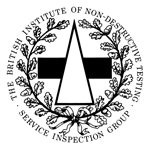
The Service Inspection Group was formed over 20 years ago by a small number of Corporate Members of the Institute who wanted to demonstrate a commitment to provide a professional service, based on an ethical approach to a very competitive environment.
The membership has grown steadily over the years, currently comprising around 30 companies, and SIG is a respected influence in the inspection and testing industry, as well as in the supervision of the membership, certification, policy and planning activities of the Institute.
SIG members have provided guidance and assistance to the PCN Scheme and maintain representation on, or contact with, external bodies such as BSI, ONR, HSE, SAFeD, UKAS, DTI, PCN and the Welding and Joining Quality Board.
To obtain SIG membership, Corporate member companies are required to provide evidence of a quality system, preferably to the requirements of UKAS or the latest version of BS EN ISO 9001.
Corporate members pay no additional fee to belong to SIG and the Committee members are active on their behalf in promoting the views and enhancing the professional credibility of the service inspection industry. Members are also entitled to use the SIG logo as part of their corporate image.
The future aims of SIG are:
- To support other groups and committees within the Institute
- To represent, and provide a forum for, those Corporate members who provide competent and professional services to the industry
- To maintain links with end-user organisations and other bodies associated with the industry.
Promotion of SIG interests is by way of the Trade & Industry Executive Committee. Nominees of SIG member companies are invited to participate in the activities of the SIG Working Group (a sub-group within the Trade & Industry Committee).
